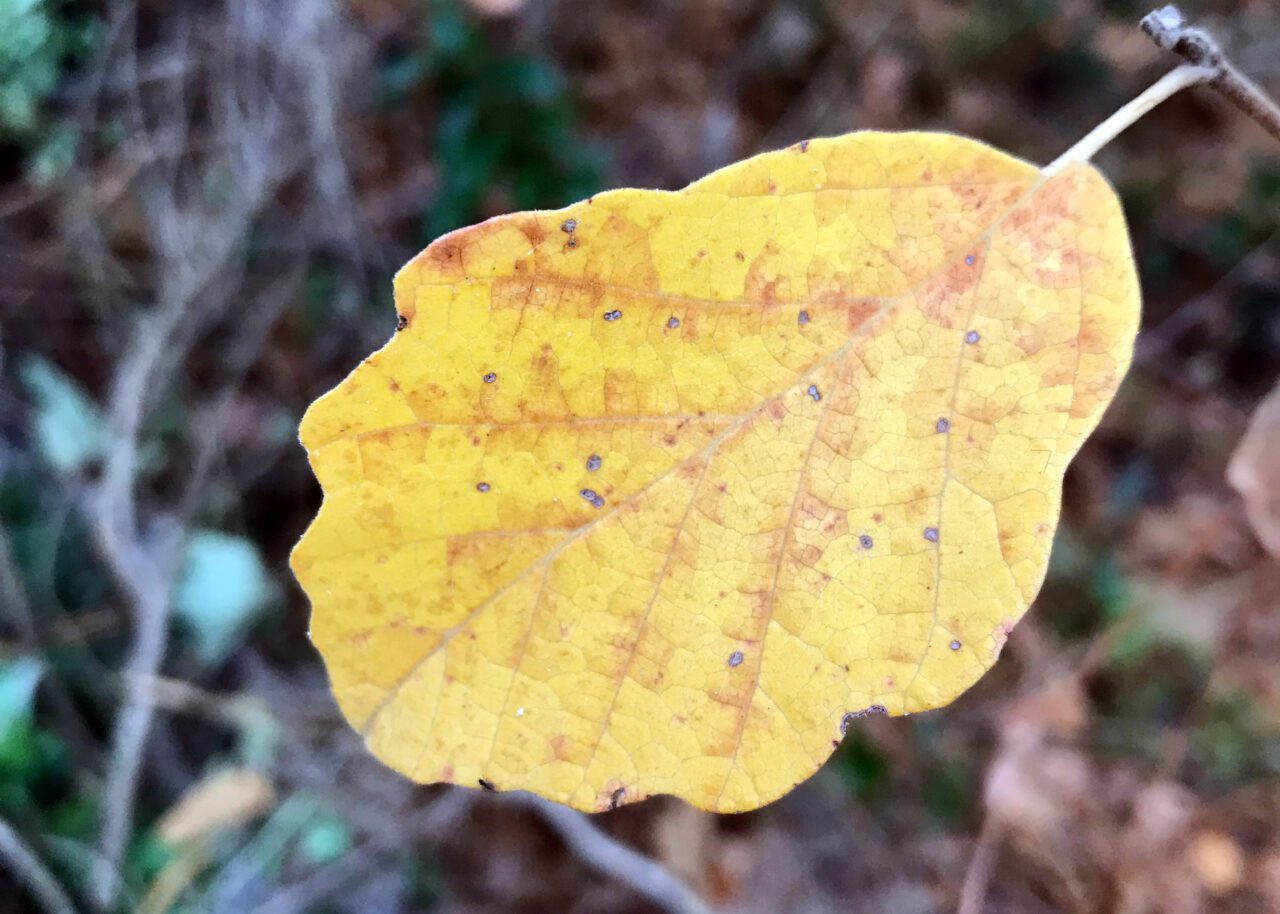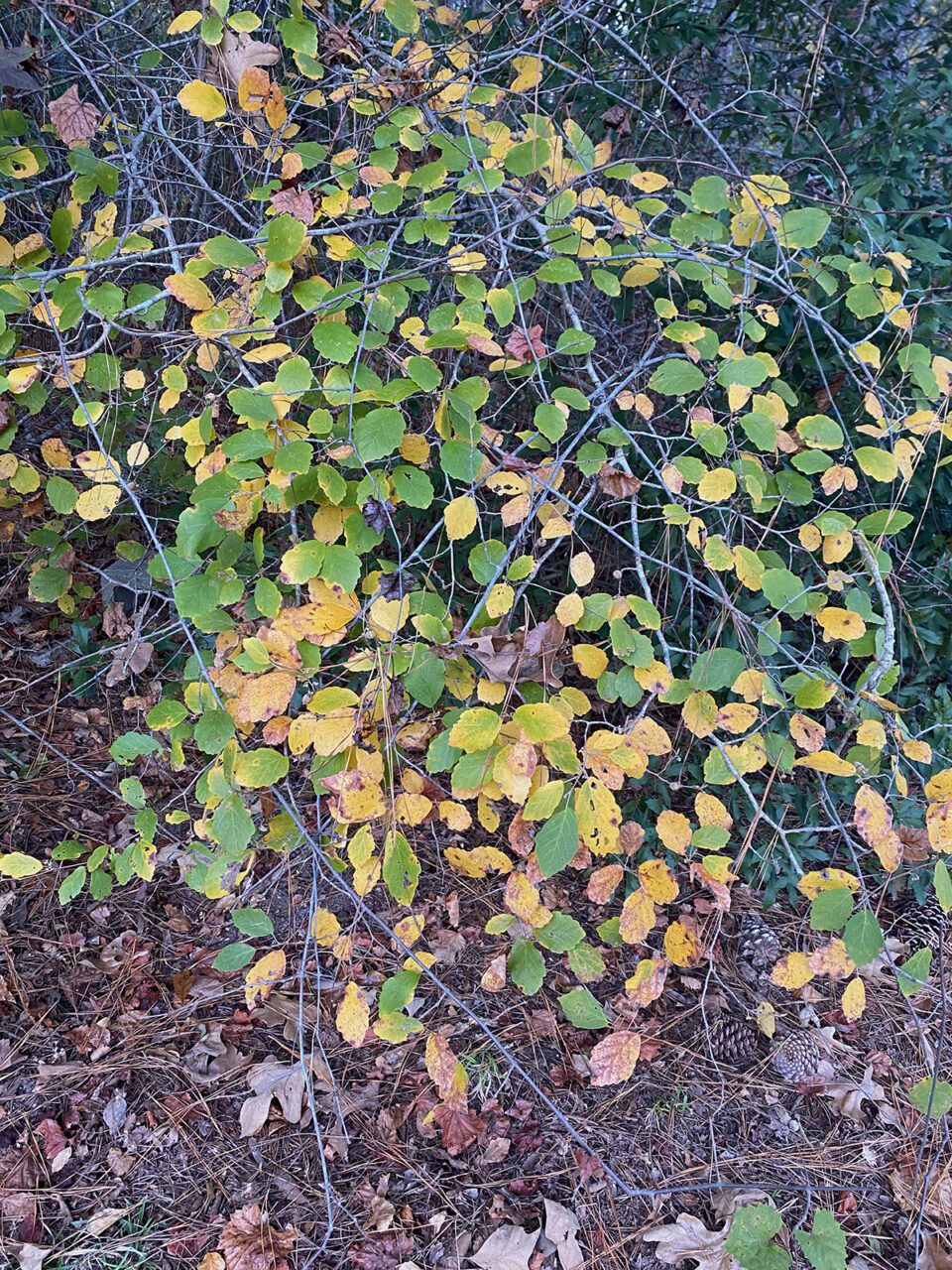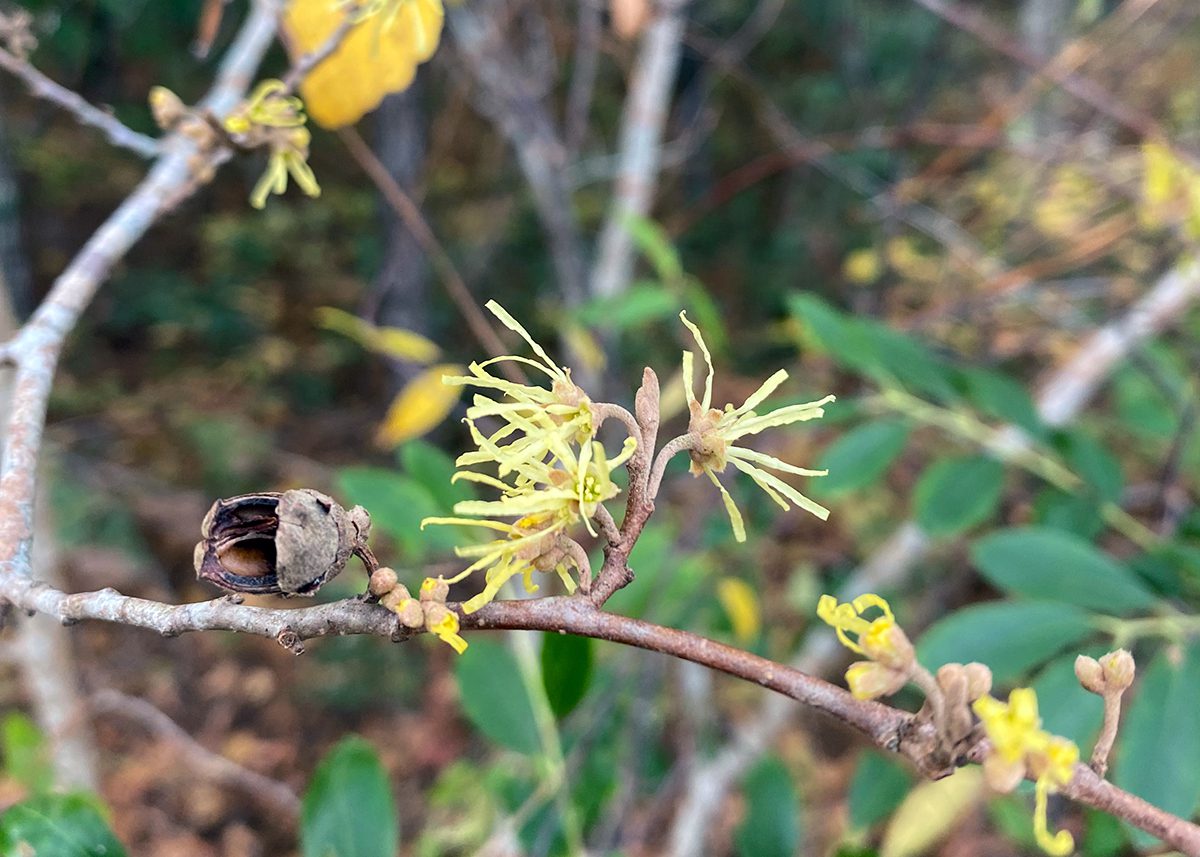
Most everyone knows what witch hazel toner/cleanser is, or has at least heard of it.
An astringent with both anti-inflammatory and antiviral properties, witch hazel (Hamamelis virginiana) has been used for centuries. Popular for skin care, witch hazel helps with various skin conditions such as acne, eczema, psoriasis, dandruff, and even hemorrhoids. It can be found in liquid, soaps, pads, salves, and several other easily applicable forms.
Supporter Spotlight
But did you know … witch hazel is native to North America?
Well, three species of it are, anyway. There’s also a variety in Japan, and one in China. The three here are Hamamelis virginiana, or common or American witch hazel; H. vernalis, or Ozark witch hazel; and H. ovalis, or big-leaf witch hazel.
Also, it grows here in North Carolina. If you’ve ever been in the woods this time of year and noticed a sweet fragrance but couldn’t pinpoint it, you’re not having olfactory hallucinations. Witch hazel blooms in the fall, usually October and November, sometimes into January or so. The blooms resemble tiny fireworks or crumpled streamers, and our variety and the Ozark variety are yellow, while the ovalis tends to be redder.
A somewhat gangly, large shrub or sometimes a small tree, witch hazel blooms when most other plants are dormant, so it can add interest to your winter landscape. Witch hazel is also deer-resistant, doesn’t have many disease or insect problems, and is fairly easy to care for.

Give it plenty of room, because this plant, which loves to be an understory accessory, can get 12-15 feet wide and 20-30 feet tall.
Supporter Spotlight
Witch hazel is also the only tree in North America to have flowers, fruit, and next year’s buds all at the same time. Remaining on the tree for a year, once fruit capsules have matured, dried, and eventually split open, they can catapult seeds as far as 30 to 45 feet. This popping makes a distinctive sound, which is where witch hazel gets another of its common names: snapping hawthorn.
So if witch hazel blooms this late in the year, what in the world pollinates it? It’s an especially fair question since its habitat ranges from Nova Scotia to Florida, and from the Great Lakes to eastern Texas.
Late-ranging bees, beetles, and flies do the work, at least until it gets too cold, and moths — specifically shiver moths. Cool name, huh? In the Noctuidae family, owlet moths, or winter moths, can raise their body temperature by shivering. The ability to raise their body temperature by as much as 50 degrees enables these nocturnal moths to fly and find food on cold nights when most every other pollinator is tucked in and bedded down.
Native Americans used a tea brewed from the leaves and bark of witch hazel for bug bites, skin irritations, poison ivy, and scratches. They also drank the tea for its health benefits against coughs, colds, diarrhea, and other ailments. Having shared their knowledge with the first settlers, the settlers then eagerly began using witch hazel for the same purposes.

Witch hazel seems to have been introduced to Europe by several plant collectors who corresponded with early settlers and merchants. Peter Collinson was one, and Mark Catesby, who received a live specimen sometime around 1743. Evidently Mr. Catesby was not stingy with his witch hazel plant.
While Native Americans and settlers boiled the ground up branches and flowers to make a type of tea, the Europeans figured out how to distill it and combine the witch hazel with alcohol, increasing its potency and thus ensuring it became a staple of every medicine cabinet.
In the mid-1800s, a Connecticut minister opened a distillery in Essex, Connecticut. Now, thanks to the work of a few families who have been harvesting witch hazel for generations, over 300 tons are harvested every year.
Witch hazel regenerates well, ensuring a sustainable harvest. Once cut, witch hazel will regrow enough to harvest again in about seven years, with some clumps having been in rotation since the Native Americans were the only ones using it.
Harvesting witch hazel is beneficial to the forest, since it’s done in winter, opening up the forest floor so other species can benefit from extra light and space.
Connecticut seems to be the epicenter of witch hazel forests, unlike here, where the shrubs are hit and miss.
Witch hazel has numerous fascinating properties, not the least of which is its ability to live under walnuts and hickories. Witch hazel is one of the few plants resistant to juglone, a natural herbicide produced by walnuts and hickories that’s toxic to many species of plants.
So how did this plant get the name witch hazel? It had nothing to do with actual witches, rather it’s thought to derive from the Middle- to Old-English wiche or wice, meaning pliant or bendable.
Another line of thought is that the name derived from the practice of using witch hazel as witching, or dowsing rods, to locate water. A Y-shaped, peeled branch of witch hazel –– the wood of preference for dowsers –– was often used when people needed to know where to dig their well. Holding the two arms of the Y, the dowser would walk around until the straight end pulled toward the ground. “X” marks the spot! In a time when wells were laboriously dug by hand, dowsers were valued persons, but of course, being able to dowse might also get you labeled as a witch, so there’s that.
If you spend any time in the woods, you may have walked right by this hiding-in-plain-sight native. The small, oval leaves are a medium green, turning to brilliant yellow in the fall, about the same color as grape vine leaves, and the two are often intertwined, making the witch hazel even harder to spot. The blooms are often camouflaged by the leaves.
Look sharp, and have fun seeing if you can spot this inconspicuous native!








